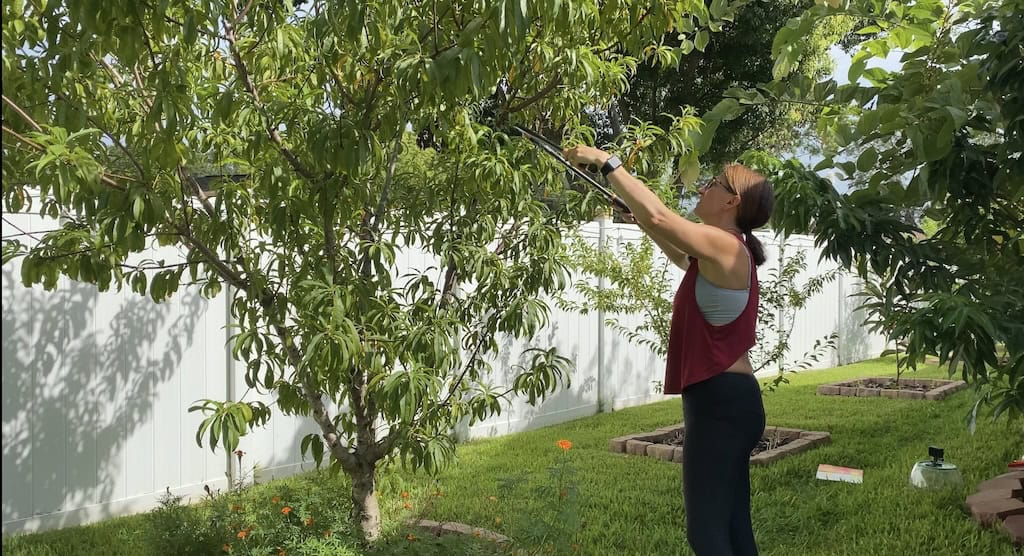Last Updated on July 18, 2024 by Homegrown Florida
This post may contain affiliate links. Read full disclosure here.
When it comes to pruning fruit trees, many gardeners automatically think of winter. But there’s a compelling reason to prune your fruit trees during the summer: it helps keep them compact and manageable. This is especially important for those of us with limited garden space. I follow a method from the book Grow a Little Fruit Tree, which is a fantastic, easy read that teaches you how to cultivate many fruit trees in small spaces. Here’s why summer pruning is a game-changer for your fruit trees and some practical tips to get you started.
Benefits of Summer Pruning
- Control Tree Size: Pruning your fruit trees in the summer is crucial for maintaining the size of your fruit trees. By cutting back new growth during the growing season, you can keep your trees smaller and more manageable. This is particularly useful if you have a small yard or want to grow multiple varieties in a limited space.
- Enhanced Sunlight Exposure: Summer pruning allows more sunlight to penetrate the canopy of your trees. This increased light can improve the health of your trees and enhance fruit quality and production.
- Disease Prevention: Summer pruning can help reduce the risk of diseases. By removing crowded or crossed branches, you improve air circulation, which can help prevent fungal infections and other issues that thrive in humid conditions.
- Immediate Results: Unlike winter pruning, which takes months to see results, summer fruit tree pruning provides immediate feedback. You can quickly see how your cuts affect the tree’s shape and growth, allowing you to make adjustments as needed.
How to Prune in Summer
Start with Clean Tools

Before you begin, make sure your pruning tools are clean. Use rubbing alcohol or any high-alcohol-content liquid, like vodka, to wipe down your equipment. This prevents the spread of diseases between trees.
Focus on New Growth
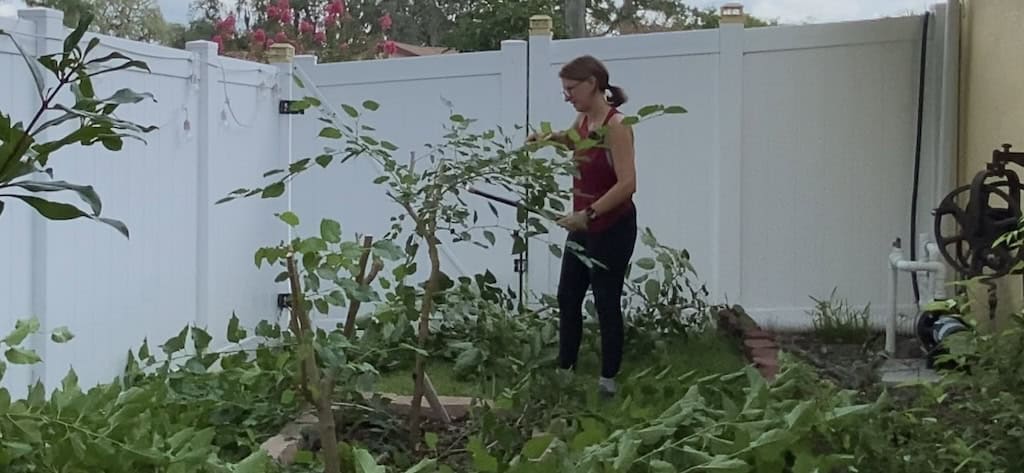
During summer fruit tree pruning, focus on the new growth. Trim back the new shoots to maintain the desired height and shape of your trees. For instance, if you want to keep your trees at about eye level, cut back any growth that exceeds this height.
Create an Open Structure
Aim to create an open, vase-like structure for your trees, especially stone fruits like peaches and plums. This shape allows better light penetration and air circulation. Remove any branches that grow inward or cross each other, as these can create dense, shaded areas where diseases can thrive.
Be Consistent
Summer pruning is not a one-time task. You may need to prune multiple times throughout the growing season to keep your trees in check. Regular pruning will help you maintain the desired size and shape, making it easier to manage your trees and harvest the fruit.
Practical Examples
Peach and Plum Trees
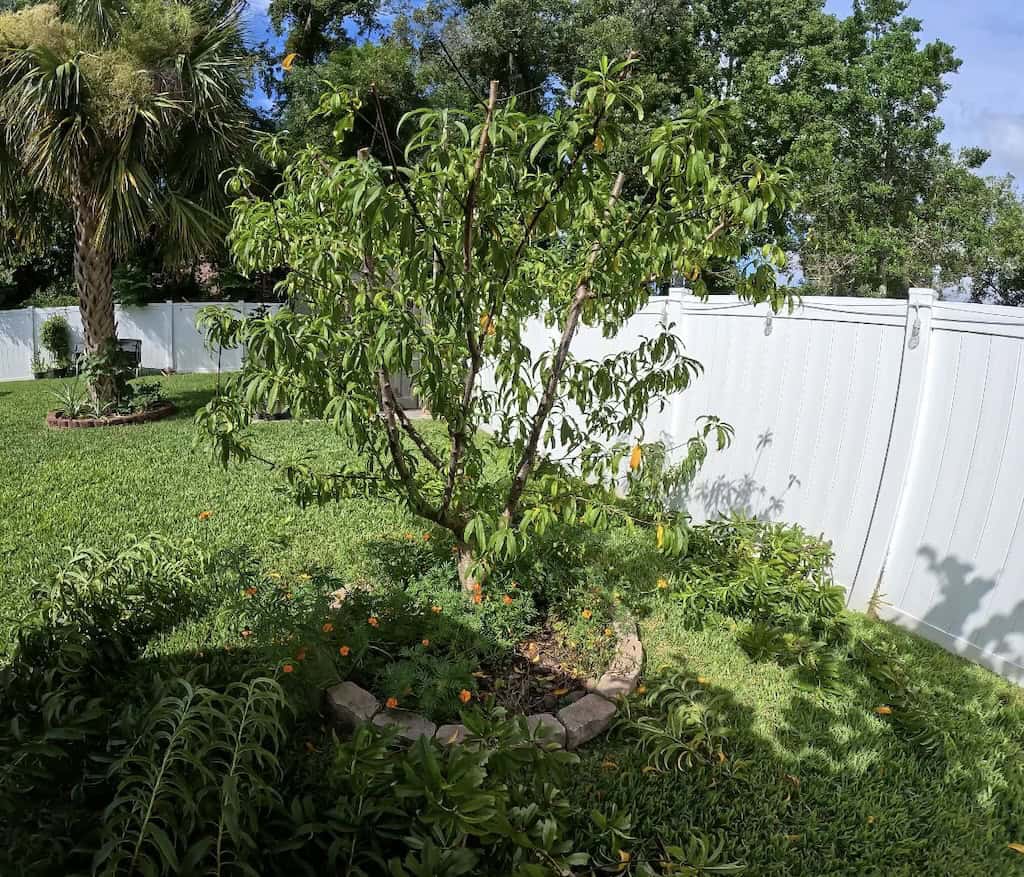
For peach and plum trees, maintaining an open vase shape is crucial. This shape allows better air circulation and sunlight penetration, promoting healthier trees and better fruit production. The best time to prune these trees for height and shape is around the summer solstice. By pruning during this time, you can control their height and encourage a bushier, more open structure.
Start by removing any branches that grow inward or cross each other, as these can create dense, shaded areas where diseases can thrive. Aim to create a tree with a central open space and evenly spaced branches radiating outward. This method ensures that even older, larger trees remain within an accessible size range for harvesting and maintain the desired vase shape. Regular summer pruning helps keep your peach and plum trees manageable and productive.
Elderberries and Blackberries
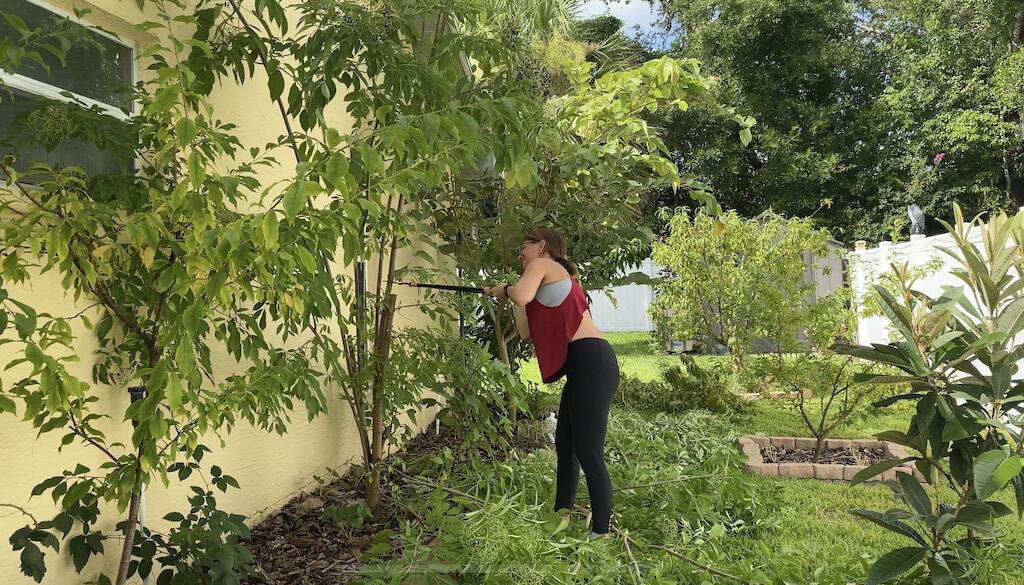
Elderberries and blackberries benefit significantly from summer pruning, especially when it comes to managing old canes. These plants produce fruit on their second-year canes, which will not produce again after their first fruiting. Therefore, it’s essential to cut back old canes to the ground once they have fruited. This not only encourages new growth but also prevents the plants from becoming unmanageable and messy.
By removing the old canes, you allow the plant to focus its energy on the new canes that will produce next year’s fruit. This method helps maintain a tidy and productive berry patch, ensuring that air circulation and light penetration are optimal. Regular pruning of elderberries and blackberries keeps them healthy and maximizes fruit production, making it easier to manage your berry harvest.
Mulberries
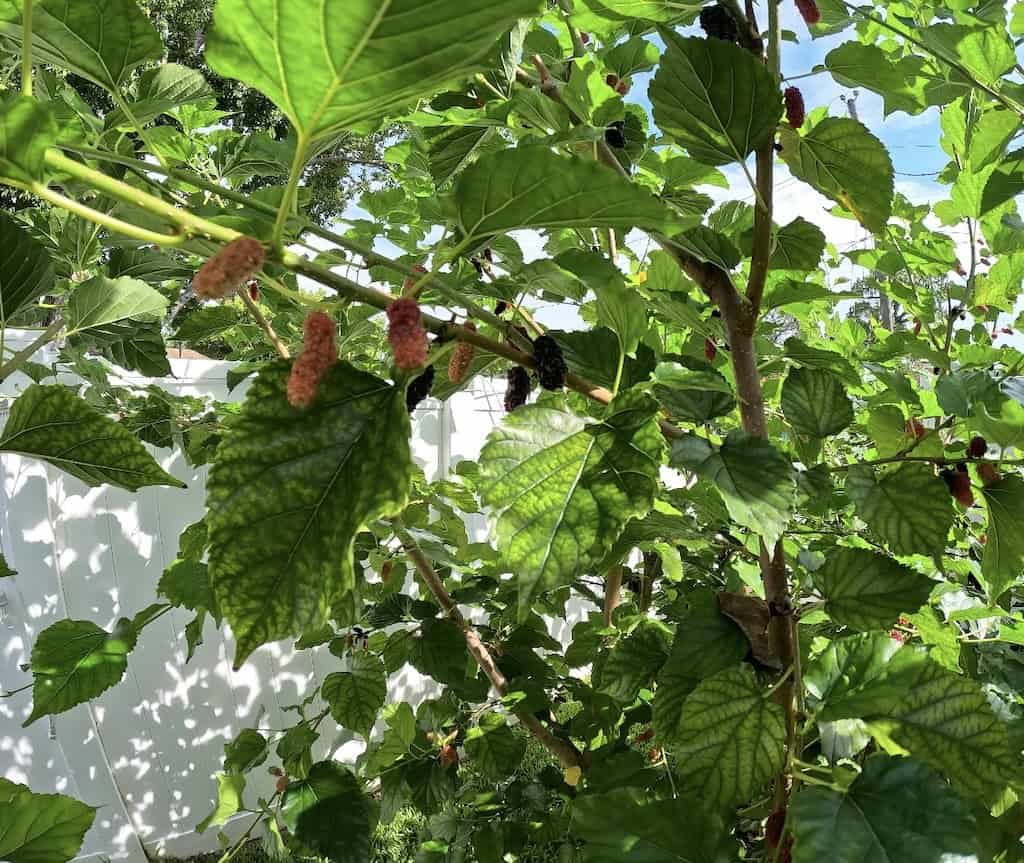
Mulberries are another example of a tree that responds well to summer pruning. Many farmers prune mulberries back so heavily that they even remove all the leaves to encourage the tree to fruit again, resulting in an additional harvest. This aggressive pruning method helps control the size of the tree and stimulates new growth, leading to more fruit production.
Regular summer pruning helps keep mulberries from overshadowing other plants and makes fruit harvesting more straightforward. You can prune these trees down to sticks, and they will still bounce back with vigorous growth. This ensures that you can enjoy multiple harvests and maintain a manageable tree size in your garden.
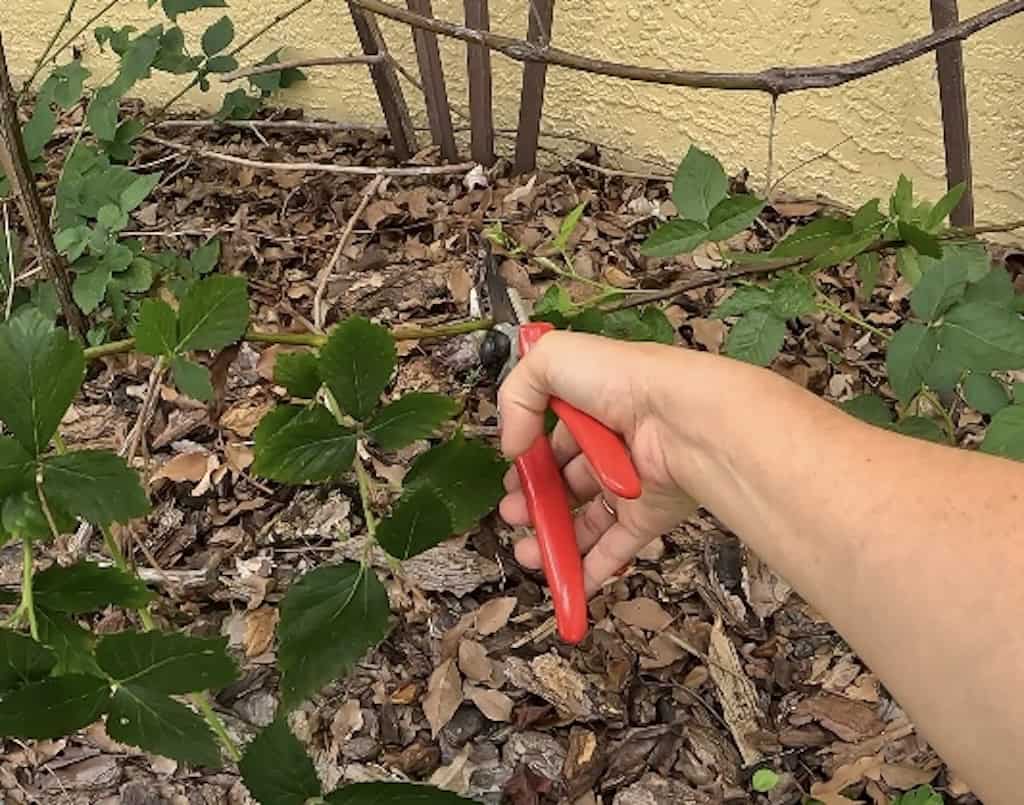
Summer pruning is an essential technique for any gardener looking to maximize their fruit production while keeping their trees manageable. By understanding the benefits and applying consistent pruning practices, you can ensure your fruit trees stay healthy, productive, and within the space you have available. For a more detailed guide, I highly recommend the book Grow a Little Fruit Tree. It’s been a valuable resource in my own gardening journey.
So, grab your pruning shears, clean them up, and head out to the garden. Your fruit trees will thank you with bountiful harvests and a more manageable growth habit. Happy gardening!

